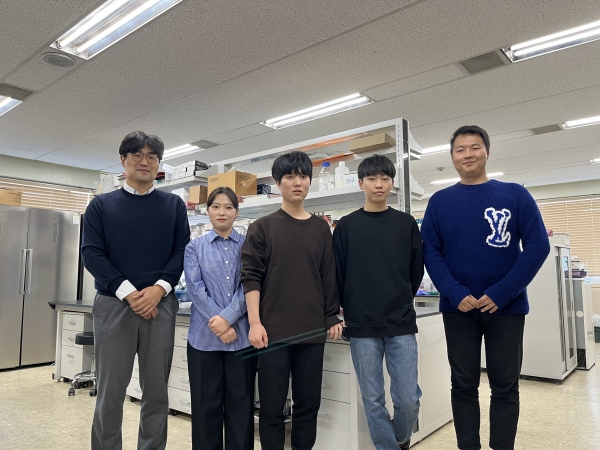
A research team led by Professor Jeong Wook Lee (CE) has developed a COVID-19 variant discrimination assay using one-pot molecular diagnostics. The team consisted of Bo Gyeong Kim (researcher, CE), Doeon Sung (integrated course, CE), Jeongmin Lee (integrated course, CE), and Chang Ha Woo (integrated course, I-Bio). The team released the discrimination assay on their lab website (https://sbl.postech.ac.kr) on Dec. 10.
The fast-spreading COVID-19 variant known as Omicron was first found in South Africa and reported by the World Health Organization (WHO) on Nov. 24. Since then, countries worldwide are making every effort to block the inflow of the variant and prevent its spread. In the fight against variants, it is important to quickly identify their types and accurately track how they spread. However, the identification and tracking of Omicron and other variants rely on sequencing technologies, which take many days with high costs. The sequencing of COVID-19 cannot be easily performed in under-resourced countries around the world. To solve this problem, accelerating the development of the variant discrimination method, the team reported a protocol to discriminate the Omicron variant from COVID-19 using SENSR (SENsitive Splint-based one-pot isothermal RNA detection) technology. Using the assay, the team have distinguished the Omicron variant from COVID-19. Moreover, they confirmed the compatibility of the SENSR assay with PCR amplicon and proxy RT-qPCR (quantitative reverse transcription polymerase chain reaction) product. The COVID-19 variant discrimination assay protocol can be completed in 20 minutes, starting from PCR amplicon (or RT-qPCR product). The variant discrimination assay is based on the SENSR technology that relies on an isothermal reaction cascade composed of ligation and transcription reactions generating an RNA aptamer that binds to a fluorogenic dye.
This discrimination assay consists of two processes. The first step is “denaturation” which takes about five minutes. The PCR amplicon (or RT-qPCR product) is denatured at 98 ºC for 5 minutes with a set of SENSR probes and intruder DNA. Next, the “incubation” step takes place for 15 minutes. The denatured mixture from the previous step with the SENSR reagent is incubated at 37 ºC for at least 15 minutes. Then, fluorescence is measured from the incubated mixture using a plate reader.
Prof. Lee said, “We hope this discrimination assay will help speed up the return to normal daily life”, and added, “we will quickly diagnose and respond to new mutations or other viruses that may emerge after COVID-19.”


